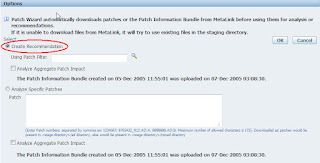PRVG-11250 : The check "RPM Package Manager database" was not performed because
Following message reported from cluvfy while performing pre-requisite for Clusterware Installation: Verifying RPM Package Manager database ...INFORMATION PRVG-11250 : The check "RPM Package Manager database" was not performed because it needs 'root' user privileges. SOLUTION Execute runcluvfy manually with "-method root" option and enter root password when prompted : Example: $/runcluvfy.sh stage -pre crsinst -n <HOSTNAME1>,<HOSTNAME2> -method root Enter "ROOT" password: For reference metalink doc id : 2548970.1
